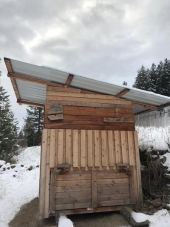













Idle dreamer




Brenda
Bloom where you are planted.
http://restfultrailsfoodforestgarden.blogspot.com/
















I am the first generation of my family to grow up on the grid eating out of the super market. I hope to be the last.




relevant ->Hardy Kiwi Kickstarter l YogaToday 2 week trial l Daring Drake Farm - NY
The farming village was above all a society of philosophers without a need for philosophy - Fukuoka












jonbonz wrote:
In my opinion it is more ethical and in ways better to use an old worn out farm than come in and deforest something pristine or something that has pioneer species already being replaced by secondary.
 I don't think anyone here suggested "deforesting" anything, just that having some trees is helpful. Slopes are helpful.
I don't think anyone here suggested "deforesting" anything, just that having some trees is helpful. Slopes are helpful.Idle dreamer




I am the first generation of my family to grow up on the grid eating out of the super market. I hope to be the last.




I am the first generation of my family to grow up on the grid eating out of the super market. I hope to be the last.





Idle dreamer









|
I would challenge you to a battle of wits, but I see you are unarmed - shakespear. Unarmed tiny ad:
Learn Permaculture through a little hard work
https://wheaton-labs.com/bootcamp
|




